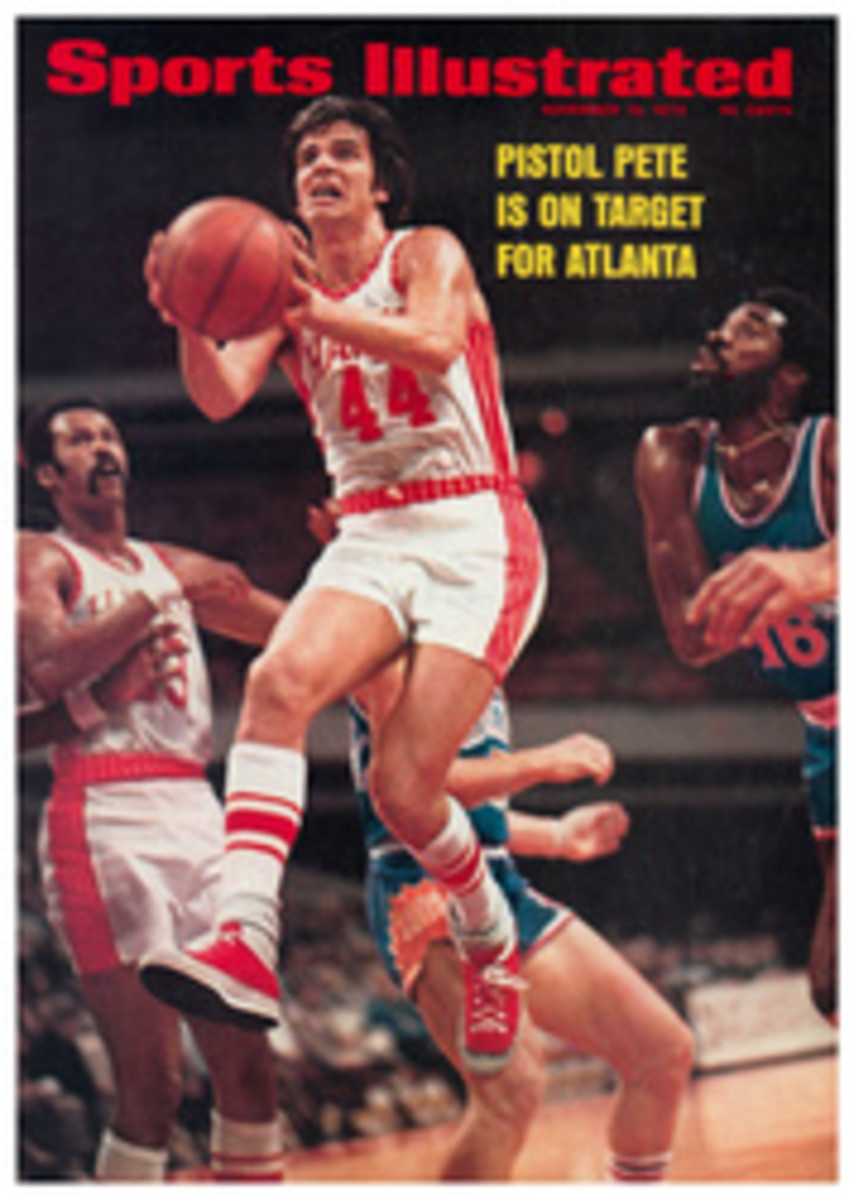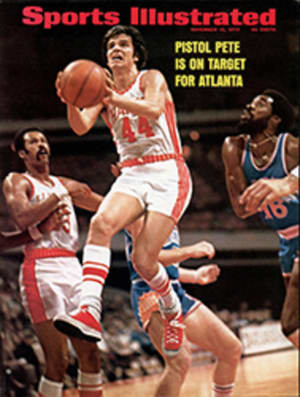
Deal the Aces in again
North America's chances of recapturing the world bridge team championship when the battle for the Bermuda Bowl gets under way in Italy next May got a big boost in Milwaukee last week. Ira Corn's Aces, considerably strengthened by the recent addition of Canada's top stars, Eric Murray and Sammy Kehela of Toronto, breezed through the American playoffs, easily beating the three other 1972-73 national team champions who were competing for the honor of representing us in 1974. The Aces, who won this year's Vanderbilt Cup without the aid of Murray and Kehela, first took their semifinal match by more than 100 international match points, eliminating the young team led by Steve Goldberg that had captured the Reisinger event last fall. Then they sailed through the final against A. E. (Bud) Reinhold's Spingold titlists to a 90-IMP victory.
Indeed, the Aces were in complete command throughout the playoffs—except for one quarter near the end in which they gave the Reinhold rooters some momentary hopes of a miracle. Earlier, Reinhold's team—which had added San Francisco's Kyle Larsen to its Spingold roster of Larry Cohen, Dr. Richard Katz, Eddie Kantar and former Ace Billy Eisenberg—had overwhelmed Billy Seamon's Floridians, winners of the Grand National, a new event played for the first time this year in which all members of each team must be from the same geographical area. Thus there was little doubt that the two strongest teams had reached the playoff finals, or that the better—and by far the more experienced—of the finalists had won.
This will be the Aces' fifth consecutive appearance in world-title play. Bob Goldman, Bob Hamman and Bob Wolff remain from the original team that twice won the Bermuda Bowl during the years (1970 and 1971) in which Italy's then 12-time world-champion Blue Team was "retired," and lost an Olympiad when the Blues came out of retirement in 1972. Mark Blumenthal joined them early this year in another losing effort in Brazil against an Italian team that included three of the Blues. And now, heavily reinforced by Murray and Kehela, they will have another crack at some of the Blues; the Italian squad has not yet been announced but will most likely once again include Giorgio Belladonna, Benito Garozzo and Pietro Forquet, unquestionably three of the most accomplished bridge players in the world.
In Milwaukee the Aces showed the kind of form they will need to beat their archrivals. They dashed off to a 76-IMP lead in the first 32 deals of the final, thanks in no small part to the hand shown below.
Against Eisenberg's contract of two hearts doubled, the defense scored its three side-suit aces, plus four trump tricks. It might have been worse, but the declarer eventually got a diamond trick and held his loss to minus-300.
Prior to the replay on Vu-Graph, panel commentators pointed out that the Reinhold team might still gain on the deal if its East-West pair happened to bid three no trump and make it, but that the Aces could also add to their swing if they set three no trump via an opening club lead. As it happened, Aces Wolff and Hamman, playing North-South against Cohen and Katz, did even better than that.
The initial bidding was the same as that shown in the diagram, but after Katz doubled two hearts, Hamman (South) rescued with three clubs, and East doubled again, albeit with slightly less enthusiasm. East was even more unhappy when his partner opened the 8 of hearts and declarer ruffed away his ace. A diamond to dummy's king forced East's second ace and he began to worry that South might eventually establish his spades. So to cut down on declarer's entries, East led a second heart to further shorten South's trumps. South ruffed and led the 10 of diamonds, covered by the queen and ruffed in dummy. A low spade lead next forced East to grab his spade ace lest dummy's remaining spade be discarded on a good diamond. At this point a diamond continuation would have caused declarer some trouble, but East persisted in the shortening process, leading a third heart for South to ruff.
With only king-10 of trumps in his hand, but the queen and two small trumps in dummy, Hamman led the king of clubs and Katz had a chance to set the contract with a most unusual play. The idea of refusing to win this trick would seem mad to most players, and even the commentators did not immediately see the effectiveness of such a move. But in fact if Katz had ducked, he would have scuttled the contract. Instead, he won with the ace and returned a spade. Now Hamman was home. He grabbed his spade king, led his last trump to dummy's queen and surrendered a heart trick. One trump and two hearts remained in dummy to win the last three tricks and raise the Aces' combined total to 770 points on the deal for a gain of 13 IMPs.
At the halfway mark of the final the Aces' lead had soared to 126 IMPs. But the Reinhold team was not yet through. To the accompaniment of claps of approval from the hometown crowd (Katz and Cohen started their bridge careers in Milwaukee, and Reinhold is from Wilmette, Ill.), the underdogs put on a sensational spurt, blanking the Aces for 20 consecutive deals and slicing their lead to 57 IMPs with 32 boards still to play. The hand shown next contributed 13 IMPs to the rally and demonstrated excellent partnership defense.
With no diamond bid by South to forewarn him, West led that suit in the closed room. Katz won and returned the king of spades. When this was ducked, declarer next forced out the king of diamonds, and West shifted to a heart. Dummy's queen lost to the king, and East's heart continuation knocked out the ace. But the heart shift had come too late to help the defense. Declarer led dummy's queen of spades to establish a second trick in that suit, while he still held the heart 10 as a stopper in his hand. Murry and Kehela could thus collect only two hearts, a spade and a diamond, and Katz made his game.
In the replay South bid diamonds before arriving at three no trump, so Eisenberg (West) knew there was no future in leading that suit. Instead he opened a heart, and dummy's queen fell to the king. Kantar's heart return knocked out the ace and Wolff, the declarer, led a diamond for an apparent winning finesse as West ducked. The king of spades was led, and it was now Kantar's turn to duck. Next came the 10 of clubs, passed to East's jack, and East returned a low spade that allowed West's 10 to force dummy's jack. Now Wolff repeated the diamond finesse, but the earlier ducks had made a dead duck of the contract. West took the king and led a spade through dummy's queen to let East collect two spade tricks and the jack of hearts for a two-trick set and a 200-point penalty—a net of 800 for the Reinhold team on the combined result.
In the course of this 128-deal final there were several oddities. On one hand the Aces reached a grand slam in just two bids—one by each partner—and made it. With the same hand, their opponents bid and bid and bid, yet stopped at six. On another deal the Aces bid a slam lacking two aces—and went down. But in making it to the world championship for the fifth successive year, they did put on an impressive performance.
What will happen in Italy next May? The fact that the North American zone is to be represented by players including Canada will be popular with our friends abroad, who have resented the appearance of two wholly United States teams following the Aces' previous victories. It will be even more popular here if it helps to beat the revamped but still undefeated Blues and bring back the Bermuda Bowl. Should that transpire, we will be defending the bowl in 1975 in Bermuda, where the world championship started a quarter century ago. We won that first one. Maybe it is a good omen.
Neither side vulnerable West dealer
NORTH
[Jack of Spades]
[5 of Spades]
[Jack of Hearts]
[9 of Hearts]
[6 of Hearts]
[5 of Hearts]
[4 of Hearts]
[2 of Hearts]
[King of Diamonds]
[Queen of Clubs]
[5 of Clubs]
[4 of Clubs]
[2 of Clubs]
WEST
[Queen of Spades]
[10 of Spades]
[7 of Spades]
[3 of Spades]
[King of Hearts]
[10 of Hearts]
[8 of Hearts]
[Queen of Diamonds]
[7 of Diamonds]
[3 of Diamonds]
[2 of Diamonds]
[Jack of Clubs]
[6 of Clubs]
SOUTH
[King of Spades]
[9 of Spades]
[8 of Spades]
[6 of Spades]
[4 of Spades]
[— of Hearts]
[Jack of Diamonds]
[10 of Diamonds]
[8 of Diamonds]
[King of Clubs]
[10 of Clubs]
[9 of Clubs]
[7 of Clubs]
[3 of Clubs]
EAST
[Ace of Spades]
[2 of Spades]
[Ace of Hearts]
[Queen of Hearts]
[7 of Hearts]
[3 of Hearts]
[Ace of Diamonds]
[9 of Diamonds]
[6 of Diamonds]
[5 of Diamonds]
[4 of Diamonds]
[Ace of Clubs]
[8 of Clubs]
WEST
(Blumenthal)
PASS
1 NT
PASS
NORTH
(Eisenberg)
PASS
2 [Heart]
PASS
EAST
(Goldman)
1 [Diamond]
DBL.
SOUTH
(Kantar)
1 [Spade]
PASS
Opening lead: ace of spades
Both sides vulnerable West dealer
NORTH
[Queen of Spades]
[Jack of Spades]
[6 of Spades]
[5 of Spades]
[4 of Spades]
[Ace of Hearts]
[Queen of Hearts]
[8 of Diamonds]
[5 of Diamonds]
[Ace of Clubs]
[9 of Clubs]
[7 of Clubs]
[3 of Clubs]
WEST
[10 of Spades]
[8 of Spades]
[7 of Spades]
[8 of Hearts]
[4 of Hearts]
[King of Diamonds]
[9 of Diamonds]
[7 of Diamonds]
[3 of Diamonds]
[Queen of Clubs]
[5 of Clubs]
[4 of Clubs]
[2 of Clubs]
SOUTH
[King of Spades]
[10 of Hearts]
[5 of Hearts]
[3 of Hearts]
[2 of Hearts]
[Ace of Diamonds]
[Queen of Diamonds]
[Jack of Diamonds]
[10 of Diamonds]
[6 of Diamonds]
[King of Clubs]
[10 of Clubs]
[8 of Clubs]
EAST
[Ace of Spades]
[9 of Spades]
[3 of Spades]
[2 of Spades]
[King of Hearts]
[Jack of Hearts]
[9 of Hearts]
[7 of Hearts]
[6 of Hearts]
[4 of Diamonds]
[2 of Diamonds]
[Jack of Clubs]
[6 of Clubs]
WEST
(Murray)
PASS
PASS
PASS
NORTH
(Cohen)
1 [Spade]
2 [Club]
PASS
EAST
(Kehela)
PASS
PASS
PASS
SOUTH
(Katz)
1 NT
3 NT
Opening lead: 3 of diamonds

